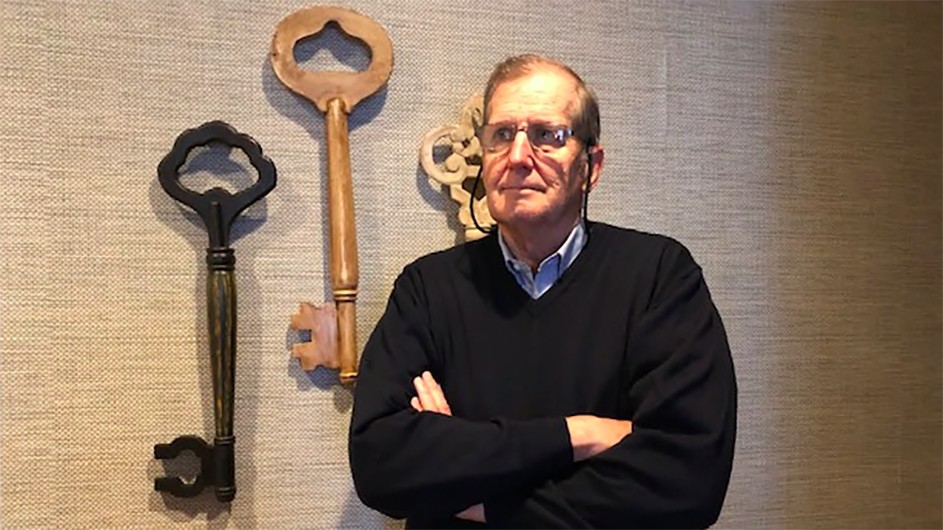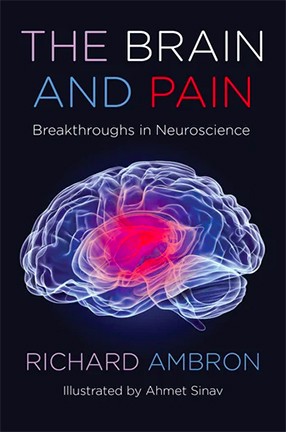Exploring the Present and Future of Pain Management
In his new book, Dr. Richard Ambron explains the science of how and why people feel pain, and examines the most recent discoveries in the field.

Pain is an inevitable part of life, but severe debilitating or chronic pain is a pathological condition that diminishes the quality of life. In The Brain and Pain, Dr. Richard Ambron, an emeritus professor of pathology, anatomy, and cell biology at Columbia University Irving Medical Center, explores the present and future of pain management, providing a comprehensive understanding based on the latest discoveries from neuroscience.
Ambron—the former director of a neuroscience lab that conducted leading research in this field—explains the science of how and why people feel pain. He describes how the nervous system and brain process information that leads to the experience of pain, detailing the cellular and molecular functions that are responsible for the initial perceptions of an injury. Ambron also examines new evidence showing that discrete circuits in the brain modulate the experience of pain in response to various circumstances, and evaluates how the brain reacts to new pain treatments.
Columbia News caught up with Ambron to talk about the book, along with his admiration for the biologists E. O. Wilson and Frances Crick.
Q. Why did you write this book?
A. My motivation was to understand the experience of pain. I was especially interested in chronic pain, which affects millions of people, is debilitating, and extraordinarily difficult to treat. Pain is a very complex sensation because it is subjective, and varies greatly depending on circumstances.
As a cellular neurobiologist and anatomist, I understood how information about an injury is transmitted along nerves to the brain. However, these nerve pathways are only part of a much larger story. The real problem was to determine how the neuronal circuits in the brain utilize this information.
In other words, how is pain influenced by mood, anxiety, and even the promise of reward? Part of the answer came from real-time images of the brain when we are in pain: Fortunately, only a few regions became active. Moreover, the activity of these regions decreased when pain was reduced by hypnosis, meditation, and the placebo effect. What was especially significant was the evidence showing that there was a correlation between pain and the activation of a circuit for attention. This was important because it indicated that the way to mitigate suffering was to shift attention away from the pain.

Q. Can you describe some of the latest discoveries from neuroscience included in the book that help alleviate pain, such as mindfulness training and other forms of nonpharmacological treatments, as well as the prospects for deep brain stimulation and optogenetics?
A. The major advance was to recognize that what we experience as being painful is due to a dynamic interplay between three neuronal systems—the peripheral nervous system and the systems in the brain that are responsible for mood and cognition. This was important because we present evidence that the information from these three systems is communicated to a center in the brain that is responsible for attending to pain.
Consequently, the key to alleviating pain would be to control the activity of this center. This can be accomplished by mindfulness training, where practitioners learn to willfully divert attention away from the pain. Achieving mindfulness takes a great deal of practice and perseverance. A more practical solution would be optogenetics, a revolutionary technique that uses lasers to manipulate the electrical activity of target neurons in the brain. Some success has been achieved in treating depression, and we are hopeful that patients will soon be able to alleviate their pain by using externally controlled lasers to reduce the activity of the pain center.
Q. Have you read any terrific books lately that you would recommend?
A. Naturalist by E. O. Wilson (and any of his other books), in which he describes his growth as a scientist and the evolution of the science—biology—he helped to define.
Q. What's next on your reading list?
A. I am now writing a book on consciousness and pain, so I spend most of my time reading scientific papers. I read mysteries at my leisure.
Q. You're hosting a dinner party. Which three academics or scientists, dead or alive, would you invite, and why?
A. E.O. Wilson: A marvelous storyteller with a profound understanding of animal behavior and the organization of complex societies.
Francis Crick: Insightful, creative, and someone who, with James Watson, revolutionized our understanding of all biological systems by deciphering the workings of the genome. He has also provided insights into the nature of consciousness.
Leonardo da Vinci: Perhaps the most creative, inventive, and artistically talented human of all time. I would like to understand how his mind approached problems.
Check out Books to learn more about publications by Columbia professors.